How to Write a Dungeon Crawl (in Actual Fiction and Not a Tabletop Game!)
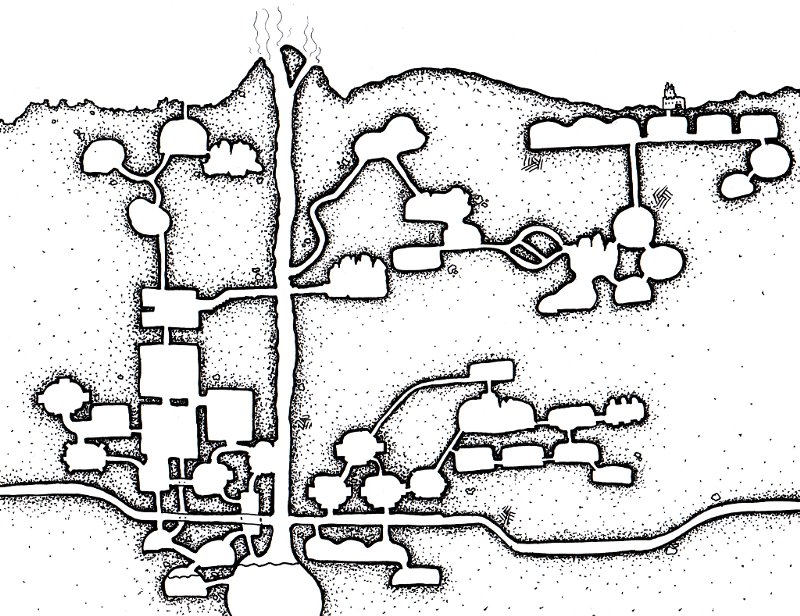
It’s still a goto for roleplayers, you see the equivalent in movies, but extended dungeon crawls are rare in genre fiction.
Even when you go back to Dungeon and Dragons‘ literary roots, you don’t really find proper dungeon stories!
Conan generally offers up 1-2 room complexes, e.g. in Robert E. Howard’s classic tale “God in the Bowl.” Tolkien uses mega dungeons, but with narrative summary and — unless they are really just an underground battlefield — only limited denizens. Clark Ashton Smith’s Seven Geases is close to a dungeon in setting, but in form is a quest story that happens to be underground.
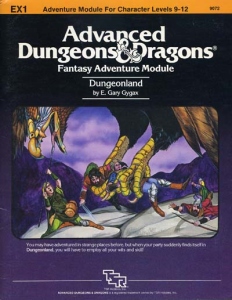
What makes a dungeon fun to play through — a series of puzzles and tactical or diplomatic challenges — just doesn’t automatically make it fun to read about, or easy to write. And the physical drama that works on screen — Indiana Jones stuff with narrow escapes and trundling rocks — doesn’t generate enough wordcount, and can only be visceral for so long.
Even so, it can be done, and modern writers do it and — of course — I’ve been pulling apart good examples to see how and why they work…
Several modern writers have pulled off extended dungeons crawls or similar. Just to name a few random examples: Paul S Kemp’s exquisite Egil and Nix stories are actually about professional dungeoneers in a Sword and Sorcery world. The climax to Michael J Sullivan’s wonderful Riyria Chronicles entails an underground adventure. And Kenneth Oppel’s wonderful Steampunk YA Skybreaker takes us exploring a drifting mega-zeppelin.
Taking them and others together, and without spoilers, here’s what makes a literary dungeon adventure work.
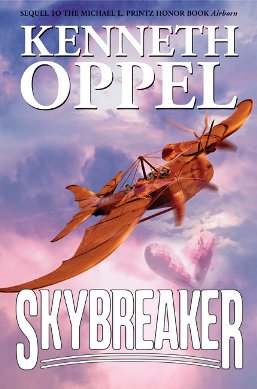
1. High Personal Stakes
Like in all adventure stories, you need high enough stakes, and these need to be personal to the characters and engaging to the reader. Wealth or knowledge isn’t enough unless each is a means to ends with which we can empathize.
For example, say the protagonist wants money to buy his mother out of serfdom (Did you hear that, Anakin?), the best friend wants to be able to afford an inn back home so she can marry the girl of her dreams, and the sorceress wants to gain hidden knowledge so she can prove herself as good as all the male sorcerers that have barred her entry into their patriarchal guilds.
2. Dungeoneer Factions
The characters need conflicting practical objectives, perhaps with the protagonist pulled between them.
So perhaps the protagonist and his best friend just want to grab some loot and go home. The sorceress wants to explore and learn. Oh, and she’s become the love interest. Meanwhile the local guide is scheming to do a runner with the party’s funds and has no intention of getting any deeper into the complex of tunnels.
For added points, throw in a murderously rival party so as to add a ticking clock and perhaps enable the good guys to use what they’ve discovered so far in order to play cat and mouse.
3. Central Significant Mystery
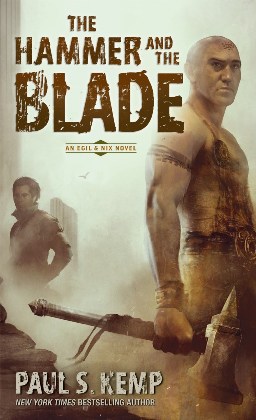
Finally, the dungeon itself has to be more than just a series of cool traps and challenges with a prize at the end.
Yes of course it has to make sense within the logic of the story world — that goes without saying. However, the best literary examples also present a mystery, ideally one that’s important to the story but also vital to surviving the dungeon.
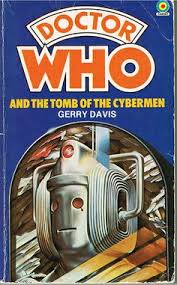
For example, the dungeon appears to be a tomb but there’s something not quite right about it. In reality, it’s a containment unit for an undead oracle to whom the builders wanted occasional access. Working that out could be vital not just to the bigger story, but also to the survival chances of the dungeoneering party when they finally locate the sarcophagus.
* * *
So high personal stakes, dungeoneer factions, and significant mystery…
Oddly, all this means that the likes of Conan and Cugel need not apply… or at least not if they want to go solo. Amoral rogue-types just don’t have the personal stakes to sustain more than a chapter of dungeoneering on their own; they need other people to provide the human drama.
There’s certainly a pay-off between these factors. Paul S Kemp, for example, has a dungeon sequence where the party are unified and there’s no immediate pursuit, but Egil and Nix have pressing personal stakes and the dungeon’s mystery is intriguing.
Even so, I think the really memorable literary dungeon crawls have all three. The one that’s stayed with me for thirty years is the old Gerry Davis novelisation of Dr Who and Tomb of the Cybermen. It’s got it all — high personal stakes, divided party and central, sinister, significant mystery.
What have you read that you’d rate as a good dungeon crawl?
M Harold Page is the Scottish author of works such as Swords vs Tanks (Charles Stross: “Holy ****!”). For his take on writing, read Storyteller Tools: Outline from vision to finished novel without losing the magic. (Ken MacLeod: “…very useful in getting from ideas etc to plot and story.” Hannu Rajaniemi: “…find myself to coming back to [this] book in the early stages.”)
Man of Gold by M.A.R. Barker contains a couple of outstanding dungeon-crawl sequences. So does its sequel, Flamesong, come to think of it.
R.A. Salvatore’s Promise of the Witch King is almost completely a dungeon crawl.
But that’s kind of cheating because You already know what motivates the characters from previous books.
It may be harder than it sounds. While fun to play, actually having a team work through a dungeon crawl in fiction I think is pretty hard to portray. Per example, in the old Dragontales one off (reviewed here http://www.runequest.za.org/article/articleview/207/1/0) by yours truly, the first story was just that, a random dungeon crawl and it almost put me off the whole volume.
> It may be harder than it sounds.
Yes, hence my article. It can be done but it has to be done right!
Good and thought provoking article by the way Harold.
Another “example” may be a story Oliver dickinson’s Complete Grizelda book. Where some characters for a possy and heard off into the Big Rubble. While not a Dungeon crawl (m ore a Rubble Run), the action thereafter is brief and just that. Awesome story but not easy to prolong.
The Scarlet Citadel, a Robert E. Howard Conan tale, is in large part a dungeon crawl. And while I know several REH fans who don’t like it because of that, it’s the most Dungeons and Dragons-like Conan story and one of my favorites.
The dungeon-crawl stuff was recycled into his only Conan novel, ‘The Hour of the Dragon.’ There’s more going on in that longer tale, so the dungeon-crawl is less prominent to the overall story.
I remember Barbara Hambly’s Dog Wizard featured an extensive crawl thru the multi-dimensional dungeon levels of the wizards’ academy
I second the recommendation for the dungeon crawl in “Man of Gold”, but the best that I’ve read is Michael Shea’s “In Yana, the Touch of Undying”, which has an extended dungeon sequence in the latter half of the book that is amazing.
Speaking of Shea, I think Nifft also had at least a couple of dungeons to pass through.
Oh, and how could I forget Barsoom?!? All of those cities with endless tunnels beneath them — if I had to choose one, I’d probably point to Gods of Mars, which had both the Therns’ stronghold and the subterranean Realm of the First-Born.
Good article, it gave me such a wave of nostalgia…
My first writing attempts were “Dungeon Crawls” inspired by years of playing dungeons and dragons with friends and doing DM stuff. But too much “What does that mean?” when a non-D&D player didn’t understand that if a hero battled through various monsters and stuff has to have random treasure… Compound that with having it set in a biomechanoid science fiction world…
Still, I see no reason why “its a dungeon crawl” should be bad. At worst limiting the genre, authorship. During some of my publishing searches I have seen essentially “Dungeon Crawls need not apply” but I presumed that was just fear of “Bigsby’s Fist of the Emperor Caligula” spell slipping past the end process editor if published then getting legal action from TSR/Wizards whatever.
However, the “Dungeon Crawl” should not be discounted. It’s every bit that mythic appeal, seen merely as part of “The Hero’s Journey”. However, “The Dungeon” that the hero enters is not necessarily just a place, it’s the spiritual test…
It is the Shaman going into the underworld to face his last tests and come back truly a Shaman. It is the “Mystery” of later religions, the Labyrinth. “The woods” of fairy tale characters to succeed or perish, to thrive or die. It is where the witch dwells, the Big Bad Wolf, the trolls and fairies and goblins.
It is where “Mystery” dwells.
The real line of division is the telling of the tale.
A RPG or a video game is an experience, a more social shared experience in the former. Good YouTube vid to pull up on this, back from flash animation early days – essentially has players not leaving the first room, wasting magic missile spells, etc.
Still, I’ve had plenty of D&D sessions where we wasted all the time bickering at the first room and guess what had total absolute fun. I’d much rather do that than lots of mischief I got into early day, matter of fact up yours PMCA whatever blue noses, it kept me OUT of trouble.
Likewise, imagine playing a RPG viewed from outside if it were real… Some angry King… Say he has a wizard that might be low level enough to not be able to just zap his daughter back but since he loans the adventurerer some starter magic items and such he can keep track of him.
“What be this!? Why is he finding that young boy’s lost dog? Sure in part I picked him because of his compassion but surely… And why is he going over each and every INCH of that cave when all he needed was the Key to the Path of Yongor… All those items, coins, Fah! I said I would make him rich if he rescues my daughter – those gems and coins belong to my peasants those monsters and bandits stole from them in the first place. And he has not only discarded but SOLD the Honor Sword of my house to now buy a Gem Sword and upload Sorcery crystals into it!? That giagantic warp bag he holds can carry a wagonload, he could have kept that sword… Does this hero be some autistic sipleton? And NOW he is at the gate of the Enemy and is more practiced than many of my knights, and by some miracle my daughter has not been taken or sacrificed by the DarkLord of Qorn… But he spends a night at the inn and a day’s shopping when he’s only got slight wounds and near full inventory to begin with!? And just outside the enemy’s lair as if all the realms now not know his quest? Surely he’ll be slit by the throat of an assasin or one of those lewd women in the hotel in my enemy’s city!”
TLDR – A RPG computer adventure if viewed as a movie or step by step description would look like an autistic weirdo at best. Let’s not even get into stuff like Dark Souls where in the hyper deadly adventure you bang the walls with your weapon for the rare but important hidden rooms though surely it’d both hurt your hand, weapon and attrack more of those horrible things to attack you.
I think the best thing is to imagine it as if told later.
One of the earliest modern “Sword and Sorcery” works – Dunsany’s “The Fortress Unvanquishable save for Sacnoth” Even though its essentially Price goes to save land in peril -> fights Iron Dragon -> Faces evil Wizard in Castle – I still imagined from that tiny short story the price’s fear and determination on the plight of his people and himself, consulting with wise people, travelling through a deadly swamp then preparing for the final adventure – a gilded age illustration of it – the ‘path to the moon’ but it was a path to a blazing comet – a surreal castle mostly Escher style and a Ming the Merciless style wizard, invulnerable save for the Dragon eye’d sword and the prince’s quick thinking and martial prowess. I imagined that all reading that short story.
In short, a minimalist approach but to capture the feelings and critical elements should work.
Cool article. I think this topic would make a great short-story anthology: The Dungeon Crawl. Hit up the big names like George R. R. Martin (he needs something else to distract him from the Song of Ice and Fire) and Stephen King (he can burp one out after breakfast–spoiler alert–there’s a giant spider in the final room).
Actually, this makes me think about rpg modules vs. fiction. It seems to me that fiction gets more credence as an art form than rpg modules, even for “genre” fiction. But I wonder: is fiction really more insightful than an rpg module?
Quick responses:
@NOLAAlbert – great idea! I wonder if Jason Waltz would do it…
Re art forms – longer response to follow
@GreenGestalt – I will read and digest before responding.
Everybody else:
I think a lot of Conan and John Carter isn’t really dungeon adventure because the place of mystery just provides an arena for social or tactical combat. Perhaps I should have done definitions first.